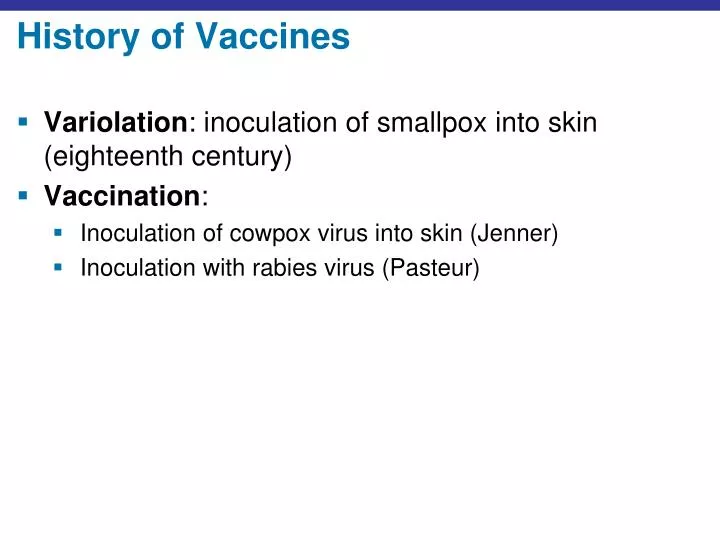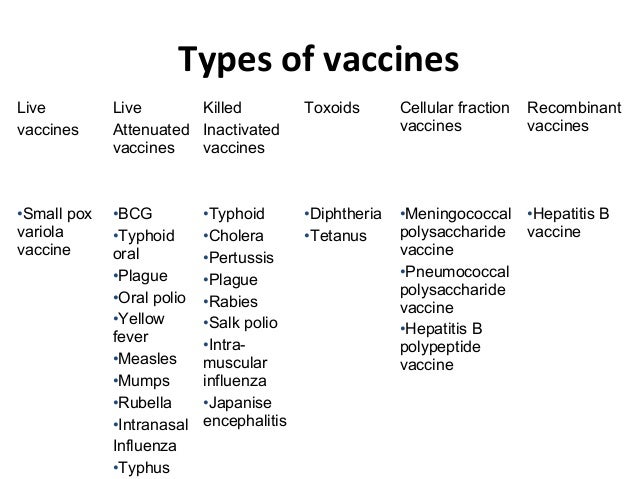History Of Vaccines Ppt

How vaccines are made.
History of vaccines ppt. Immunization schedule has changed over time. In the 21st century molecular biology permits vaccine development that was not possible before. Learn about the human immune system s response to vaccination.
The adverse reactions that may occur may be grouped under the following heads. Learn about the history effectiveness and types of vaccines. The story of vaccines did not begin with the first vaccine edward jenner s use of material from cowpox pustules to provide protection against smallpox.
History of the immunization schedule. Edward jenner is considered the founder of vaccinology in the west in 1796 after he inoculated a 13 year old boy with vaccinia virus cowpox and. If you continue browsing the site you agree to the use of cookies on this website.
There are several different types of vaccines. From the late 19th century vaccines could be developed in the laboratory. How your immune system responds to the germ who needs to be vaccinated against the germ the best technology or approach to create the vaccine based on a number of these.
Reactions inherent to. Vaccines which must be stored in the cold part but never allowed to freeze are. Buddhist monks drank snake venom to confer immunity to snake bite and variolation smearing of a skin tear with cowpox to confer immunity to smallpox was practiced in 17th century china.
Then sequence the steps in the process on your own. Typhoid dpt tetanus toxoid dt bcg and diluents hazards of immunization no immune response is entirely free from the risk of adverse reactions or remote squeal. Rather it begins with the long history of infectious disease in humans and in particular with early uses of smallpox material to provide immunity to that disease.
Vaccines work by stimulating the immune system to attack specific harmful agents. Each type is designed to teach your immune system how to fight off certain kinds of germs and the serious diseases they cause. When scientists create vaccines they consider.
Vaccine s history the present and the future has a past slideshare uses cookies to improve functionality and performance and to provide you with relevant advertising. The practice of immunisation dates back hundreds of years. However in the 20th century it became possible to develop vaccines based on immunologic markers.
Find out how the u s. It contains certain agents that not only resembles a disease causing microorganism but it also stimulates body s immune sustem recognize the foreign agents. A vaccine is a biological preparation that provides active acquired immunity to a particular infectious disease a vaccine typically contains an agent that resembles a disease causing microorganism and is often made from weakened or killed forms of the microbe its toxins or one of its surface proteins.
Vaccine suspension of weakened or killed microorganisms or toxins or of antibodies or lymphocytes that is administered to prevent disease.



















